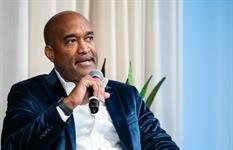
Communicators must continue evolving as trusted advisors.
Mike Prokopeak is Ragan’s director of council learning, community and content.
At Ragan’s 2025 Internal Communications Conference, senior communicators gathered at Microsoft’s Redmond, Washington. headquarters on Oct. 14 to discuss how internal communications drives measurable business value, adapts to AI-driven change and secures its role as a strategic partner.
The conversation centered on proving value through alignment and trust, addressing operational inefficiencies, responsibly leveraging generative AI and redefining communications’ strategic influence.
Mary C. Buhay, Ragan chief growth officer and head of council, welcomed the group of 22 participants, who shared frameworks for prioritizing work, examples of AI innovation and success stories in leadership engagement and employee advocacy.
The overarching message: Communicators must continue evolving as trusted advisors—translating strategy into clarity, strengthening organizational alignment and demonstrating tangible impact on business performance.
The discussion focused on four key themes: demonstrating value, managing challenges, leveraging AI responsibly, and defining communications’ strategic role within the enterprise.
The value of communications
When asked to describe the value communications brings, the group agreed that communications drives alignment between employees and leadership, translating business objectives into clarity, purpose and trust. Communicators amplify executive messages externally but also serve as internal “listening posts,” helping leaders understand sentiment, morale and credibility across teams.
The group emphasized several dimensions of value:
Alignment and clarity: Communicators bring focus to mission and strategy, enabling employees to perform effectively and stay connected to organizational purpose.
Efficiency and enablement: Streamlined messaging helps teams work smarter, reducing friction and boosting productivity.
Trust as currency: Many organizations are redefining success around employee joy, engagement and trust, which are viewed as the foundation for customer satisfaction and brand loyalty.
Leadership partnership: Communicators act as both megaphones for executives and filters for feedback, ensuring messages are authentic, well-informed, and actionable.
Operational and organizational challenges
A recurring challenge discussed was the reactive nature of leadership engagement. Many participants noted that executives often bring in communications teams too late, when issues have become urgent crises. This last-minute culture undermines effectiveness and creates unnecessary strain.
To address this, communicators are setting clearer boundaries and establishing prioritization frameworks. Strategies include:
- Creating tiered request systems that define what deserves communications support versus what falls outside the function’s scope.
- Saying no with structure—requiring leaders to quantify requests in terms of time, talent and impact.
- Implementing time-boxing efforts to protect resources and focus on high-value outcomes.
- Tiering requests into a top tier of what leadership can and will support, a middle tier related to strategic objectives and a third tier or requests that are expendable.
These frameworks reinforce the message that communications is a strategic function, not an operational catch-all.
AI in action: driving value through innovation
The conversation then turned to how teams are using generative AI to enhance communications impact. Organizations are experimenting with automation and content intelligence tools to streamline operations, enhance creativity, and deepen personalization—while maintaining human oversight. Examples included:
- Internal efforts to produce executive briefs and automating cyclical communications processes.
- AI assistants and chatbots integrated into Slack and other collaboration tools to answer FAQs or manage repeated requests related to large initiatives.
- Hackathons and AI experience events to boost literacy, generate excitement and highlight practical benefits.
Some participants noted cybersecurity and governance challenges, including restrictions that limit AI experimentation. Others emphasized the need to demonstrate tangible outcomes and show how AI tools save time, improve accuracy or enhance storytelling rather than simply increasing productivity metrics.
While optimism ran high, participants acknowledged that AI adoption will reshape the workforce. Fewer people may be needed for some tasks, underscoring the importance of training, adaptability and strategic thinking.
Communicators are emphasizing soft skills such as judgment, empathy and storytelling as the irreplaceable differentiators in an AI-augmented workplace. Participants described a wide range of employee sentiment, from excitement to fatigue, and stressed the communicator’s role in maintaining alignment, transparency and trust through change.
“There’s excitement at one end of the spectrum, there’s ‘don’t give a sh—’ at the other, and there are those in their 40s who are like, ‘I’ve got to outlive this,’” said one senior communicator about the range of feelings in the workplace that is correlated with career level and age.
Elevating the role of communications
Senior communicators also discussed how they justify and enhance their strategic influence. Common strategies included:
- Understanding leadership priorities and mapping communications outcomes directly to business goals. “It’s understanding what matters most to that senior leader [and] showing the correlation between our work and what matters to them,” said one communicator.
- Adapting metrics to leadership styles, balancing data-driven dashboards with qualitative measures of understanding and engagement. “A lot of leaders are into data, others not so much,” said another roundtable participant. “I’m leading a large change within the organization and will often say, ‘When we’re done, if there are no questions that’s how we know we’ve done this well.’”
- Earning a trusted advisor role by anticipating needs and being such a valuable asset that there’s deep integration and influence. “When you look around the room and you’re the most under-titled person, that’s a good thing,” said one participant.
Participants noted that success is evident when executives begin echoing the communicator’s strategy or seek them out proactively for guidance.
The group shared somes examples of impact:
- Goal-driven planning: One team began its annual planning process by drafting a hypothetical award entry, forcing a focus on outcomes and making it easier to reject misaligned requests.
- Employee engagement campaigns: Another organization built a peer-to-peer recognition program that surpassed expectations in adoption and visibility, driving organic advocacy and brand engagement.
Buhay concluded the roundtable with a note that communicators are not merely message carriers—they are architects of alignment, trust and business clarity. Their challenge moving forward is to continue proving value through measurable outcomes, disciplined prioritization and proactive partnership.
The post Communications Leadership Council Roundtable Recap: Redefining communications’ value appeared first on PR Daily.















